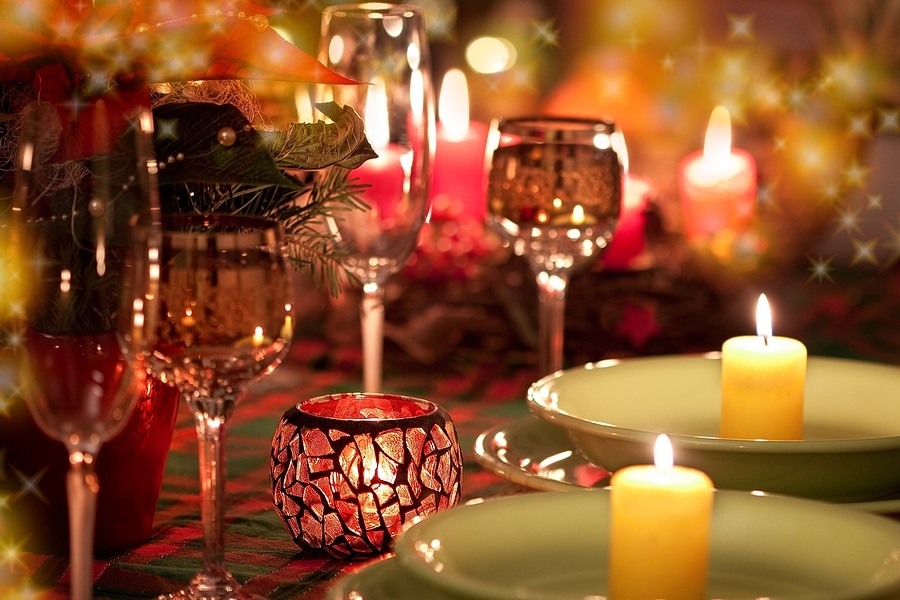Protect Your Home with These Holiday & Winter Fire Safety Tips

With early Black Friday sales everywhere you look, the holiday season is in full swing. Plus, this year’s late Thanksgiving means that Christmas will follow soon after. Those celebrating Hanukkah catch a break in 2024, with the festival commencing at sundown on December 25—one day before Kwanzaa. However you celebrate—whether you light candles, hang LED lights, decorate trees, or all of the above—we wish you a safe holiday season.
The months ahead also bring the highest rate of home fires, a leading cause of home insurance claims. Not surprisingly, more than one-third of home fires occur between December and February, but Thanksgiving is the peak day for home cooking fires—more than three times the daily average. Christmas Day and Christmas Eve rank second and third, respectively, with nearly twice the daily average.
We hope these holiday and winter fire safety tips will help keep you, your family, and your guests safe during the months ahead.
Pre-Holiday Safety Tips
Safety, of course, is important every day. Follow these safety tips before holiday get-togethers, as well as year-round.
- Make sure you have working smoke alarms. Use the test button monthly, but especially before holiday cooking.
- Keep knives out of the reach of children.
- Move all electrical cords from appliances away from areas children can reach.
- Keep matches and lighters in high or locked cabinets. (Consider switching to a rechargeable lighter, which uses a tiny electrical arc instead of a flame.)
- Learn what to do when someone is choking.
- Drive safely. The months ahead bring increased traffic volume and unsafe road conditions.
Cooking Safety
Holiday celebrations typically mean more cooking—and greater risk of home fires and fire injuries. One-third of cooking fires result from unattended cooking, often when something distracts the cook and causes him or her to leave the kitchen.
To reduce the risk of cooking fire, follow these guidelines:
- Stay in the kitchen; don’t leave cooking food unsupervised. (This tip also applies to outdoor turkey fryers.) According to the National Fire Protection Association (NFPA), unattended cooking is the leading contributing factor in cooking-related fires.
- Keep knives sharp–and away from counter edges. Contrary to popular belief, dull knives cause more injuries than sharp blades.
- Wear short or tight-fitting sleeves. Long, loose sleeves may catch on fire or get caught on pot handles.
- Enforce a “kid-free zone” three feet around the stove.
- To limit distractions, keep pets out of the kitchen during holiday meal prep.
- Keep the area surrounding the stove free of towels, papers and other combustible materials.
- Keep a pot lid handy to smother a pan fire. Shut off the heat and cover the fire with a lid. Do not pick up the pot or pan, and do not use water, which will cause splashing and spread the fire.
Candle Safety
Candle fires have tripled during the past decade. In 2022 alone, the U.S. imported more than $1 billion in tapered candles. These types of fires peak on Christmas Day, followed by New Year’s Day and Christmas Eve. More than one-third of these fires result from unattended or abandoned candles. Another 25% of the fires occurred because the candle was too close to something combustible, such as curtains or paper.
If burning candles for decorative or ritual purposes, observe the following candle safety practices:
- Use candles with protective, non-combustible shades or globes.
- Use a sturdy metal, glass or ceramic candle holder.
- Place candles at least four feet away from flammable materials, such as curtains, bedding and decorations.
- Extinguish candles before leaving the room.
- Don’t allow a candle to burn within two inches of the holder.
- Never leave candles unattended. Half of home decoration fires in December start with candles, per the NFPA. Unattended or abandoned candles account for more than one-third of these fires.
Home Heating Systems
According to the New York City Fire Department (FDNY), home-heating equipment is the second leading cause of home fires (cooking is No. 1). Major causes include poorly maintained systems, space heaters positioned too close to combustible materials, and flaws in building and installing heating units.
Protect your family and your property by following these guidelines:
- Hire a qualified technician to install new equipment.
- Have a qualified professional inspect heating systems annually.
- Schedule regular cleaning of the boiler, furnace, hot water heater and chimney.
- Have a professional inspector check out wood-burning stoves or fireplaces, including chimneys and connectors, every year.
- Make sure the fireplace fire is completely extinguished before retiring at night.
Space Heater Safety
When buying an electric space heater, look for heaters that automatically shut off. New York City prohibits the use of kerosene or propane heaters, which pose a high risk of death and injury. The number-one rule to keep in mind with space heaters: give them at least three feet of space.
- Do not use an extension cord with a space heater.
- Inspect the electrical cord for damage before each use.
- Keep young children and pets away from space heaters.
- Keep combustible materials, such as curtains, at least three feet apart.
- Do not use space heaters in areas where they can come in contact with water, such as bathrooms.
Christmas Tree Safety
Both real and artificial Christmas trees bring an increased risk of fire. Almost half of these fires are caused by defective lighting, including electrical cords and plugs. If bringing a tree into your home, follow these safety tips:
- If buying an artificial tree, choose one labeled as flame-retardant.
- When choosing a real tree, select the freshest-looking tree available. Test freshness by gently using your thumb and forefinger to pull a branch toward you; very few needles should come off.
- Use a sturdy stand designed not to tip over.
- Cut 2” from the base of the trunk before placing the tree in the stand.
- Place the tree at least three feet away from heating system air registers, fireplaces and other heat sources.
- Position the tree near an electrical outlet to minimize use of extension cords.
- Connect no more than three strands of mini light sets. Use lights with the label of a recognized testing laboratory.
- Never decorate a tree with lit candles.
- Always turn tree lights off before leaving home or going to bed.
- Add water to the tree stand daily, and make sure it never runs dry.
- Get rid of live trees after Christmas—or when they become dry. Dried-out trees pose a fire danger and should not be left in the home or garage, or placed outside against the home.
If you have any questions about insurance or your current insurance policy, or if you would like a free insurance review, please call us at 877-576-5200.

